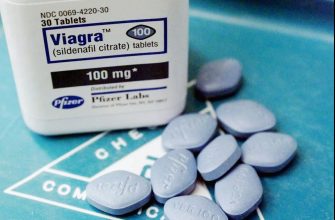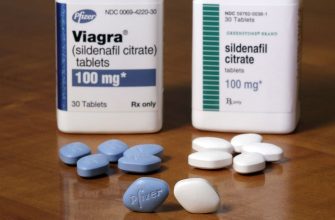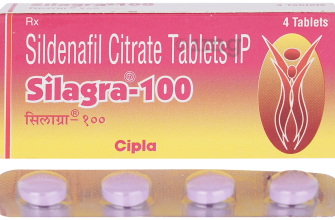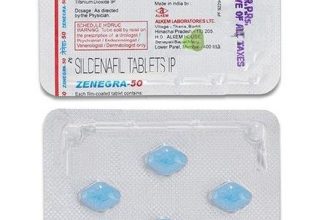Choosing between Vardenafil, Sildenafil, and Tadalafil can significantly impact your treatment for erectile dysfunction. Each option offers unique benefits and characteristics that cater to different needs and lifestyles. Evaluating your preferences and discussing these with your healthcare provider can lead to the best decision for your situation.
Vardenafil, commonly known by its brand name Staxyn or Levitra, acts quickly within 30 to 60 minutes and lasts for about 4 to 5 hours. This makes it a suitable choice for spontaneous intimacy, but users should be aware of potential interactions with nitrates and certain medications.
Sildenafil, widely recognized as Viagra, also works rapidly, typically taking effect within 30 to 60 minutes and lasting around 4 to 6 hours. This medication has a long-standing reputation and a wealth of clinical data supporting its use. However, it may cause visual disturbances in some individuals and should be taken on an empty stomach for optimal absorption.
Tadalafil, known as Cialis, is distinct for its prolonged duration of action, lasting up to 36 hours. This extended window provides greater flexibility in planning intimate moments. Additionally, Tadalafil can be taken daily in lower doses, offering a more consistent approach to treatment. Its potential side effects include muscle aches and indigestion, which some find manageable.
Consider your personal habits, lifestyle, and the specifics of your condition when weighing these options. A thoughtful consultation with your doctor will clarify which medication aligns best with your needs, ensuring a tailored approach to your erectile health.
- Vardenafil vs Sildenafil vs Tadalafil: A Comprehensive Comparison
- Side Effects
- Dosing Considerations
- Food Interactions
- Mechanism of Action: How Each Drug Works
- Vardenafil and Sildenafil
- Tadalafil
- Indications and Uses: When to Use Each Medication
- Sildenafil Recommendations
- Tadalafil Use Cases
- Dosing Guidelines: Recommended Dosages for Vardenafil, Sildenafil, and Tadalafil
- Vardenafil
- Sildenafil
- Tadalafil
- Side Effects Comparison: What to Expect from Each Drug
- Drug Interactions: Safety Considerations with Vardenafil, Sildenafil, and Tadalafil
- Common Interactions
- General Guidelines
- Cost and Accessibility: Comparing Prices and Availability
- Price Comparison
- Insurance Coverage and Alternatives
Vardenafil vs Sildenafil vs Tadalafil: A Comprehensive Comparison
When choosing between vardenafil, sildenafil, and tadalafil, consider their unique characteristics and how they may suit your needs.
- Vardenafil: This medication typically takes about 30-60 minutes to work, with effects lasting up to 5-6 hours. Vardenafil is often preferred for its effectiveness in producing an erection with sexual stimulation.
- Sildenafil: Known for its speed, sildenafil usually begins to take effect within 30 minutes and lasts around 4-6 hours. It’s a popular choice for those seeking quick relief from erectile dysfunction symptoms.
- Tadalafil: Tadalafil sets itself apart with its longer duration of action, lasting up to 36 hours. This makes it more suitable for individuals who prefer spontaneity in their sexual activity.
All three medications share a similar mechanism of action, enhancing blood flow to the penis by inhibiting the enzyme phosphodiesterase type 5 (PDE5). This is vital for achieving an erection with sexual arousal.
Side Effects
- Common side effects: Headaches, flushing, nasal congestion, and upset stomach are typical for all three medications.
- Serious side effects: Priapism (prolonged erection) and sudden vision loss, while rare, can occur with any of these treatments.
Dosing Considerations
- Vardenafil: Administered in doses of 5mg, 10mg, or 20mg, optimal dosing depends on individual efficacy and tolerability.
- Sildenafil: Commonly prescribed in 25mg, 50mg, or 100mg doses. Start low to gauge response and adjust as needed.
- Tadalafil: Available in 2.5mg, 5mg, 10mg, and 20mg doses. The 2.5mg and 5mg options allow for daily use, which may benefit frequent sexual activity.
Food Interactions
- Vardenafil: Fatty meals can delay absorption, but it remains effective.
- Sildenafil: Similar to vardenafil, heavy meals may interfere with absorption but will not prevent efficacy.
- Tadalafil: Not significantly affected by food, making it a flexible choice.
In conclusion, select the medication that aligns with your lifestyle and sexual activity preferences. Consulting a healthcare provider is recommended to tailor the choice to personal health conditions and preferences.
Mechanism of Action: How Each Drug Works
Vardenafil, sildenafil, and tadalafil work by enhancing the effects of nitric oxide, a chemical that relaxes muscles in the blood vessels. This process increases blood flow to the penis, facilitating an erection during sexual arousal.
Vardenafil and Sildenafil
Vardenafil and sildenafil both inhibit phosphodiesterase type 5 (PDE5), an enzyme that breaks down cyclic guanosine monophosphate (cGMP). Increased cGMP levels lead to prolonged smooth muscle relaxation and sustained blood flow. Vardenafil acts quickly, with effects noticeable within 30 minutes and lasting for around 4-5 hours. Sildenafil also shows rapid onset, effective for about 4-6 hours.
Tadalafil
Tadalafil operates similarly by blocking PDE5, but its half-life is much longer. Effects can last for up to 36 hours, allowing for greater spontaneity in sexual activity. Tadalafil’s action provides more flexibility compared to vardenafil and sildenafil, appealing for those seeking longer-lasting results.
Each of these medications offers a unique approach while sharing a common mechanism, making them effective options for managing erectile dysfunction.
Indications and Uses: When to Use Each Medication
Use Vardenafil primarily for treating erectile dysfunction (ED). It works quickly, typically within 30 to 60 minutes, and can last up to 5 hours. If you find yourself needing a rapid response during intimate moments, Vardenafil serves this need well. It’s suitable for men who may have difficulty achieving or maintaining an erection, especially those who are looking for a short-duration effect.
Sildenafil Recommendations
Sildenafil is also effective for ED, taking about 30 minutes to work and lasting up to 4 to 6 hours. Choose this option if you prefer a well-studied medication; it has been in use for a longer time and is widely recognized. Sildenafil can be beneficial for men with varying degrees of ED, including those with occasional issues as well as more persistent cases. Additionally, it’s commonly prescribed for pulmonary arterial hypertension, making it versatile.
Tadalafil Use Cases
Tadalafil is best when you need a longer-lasting solution. Its effects can last up to 36 hours, allowing for greater spontaneity in sexual activity. This flexibility makes it particularly appealing for men who engage in sexual activity over extended periods. Furthermore, Tadalafil also addresses benign prostatic hyperplasia (BPH), making it a choice for men dealing with both ED and urinary symptoms associated with prostate enlargement.
Each medication has unique properties that suit different lifestyles and health needs. Consult with a healthcare provider to identify which option aligns best with your specific circumstances and preferences.
Dosing Guidelines: Recommended Dosages for Vardenafil, Sildenafil, and Tadalafil
For optimal results, follow these recommended dosages for Vardenafil, Sildenafil, and Tadalafil.
Vardenafil
The typical starting dose of Vardenafil is 10 mg, taken approximately 60 minutes before sexual activity. Depending on effectiveness and tolerability, the dose may be adjusted to 5 mg or increased to a maximum of 20 mg. Do not take more than one dose in 24 hours.
Sildenafil
Start with a dosage of 50 mg, taken 30 minutes to 1 hour prior to sexual activity. Based on individual response, the dose can be adjusted to as low as 25 mg or increased up to 100 mg. Limit use to once per day.
Tadalafil
Tadalafil offers flexibility in dosing with a daily option. The recommended starting dose for on-demand use is 10 mg, taken before anticipated sexual activity. If effective, consider increasing to 20 mg. For daily use, a fixed dose of 2.5 mg or 5 mg is advised, allowing for spontaneous sexual activity without timing concerns.
Always consult a healthcare professional to determine the best dosing strategy tailored to individual health needs and conditions. Adjustments should be made cautiously, based on therapeutic response and side effects.
Side Effects Comparison: What to Expect from Each Drug
Choose wisely between vardenafil, sildenafil, and tadalafil by understanding their side effects. Each medication can affect individuals differently, so knowing what to expect makes treatment more manageable.
Vardenafil typically presents these side effects:
- Headaches
- Flushing
- Stomach upset
- Runny or stuffy nose
- Back pain
Serious side effects may include changes in vision or hearing, requiring immediate medical attention. Most side effects are mild and temporary.
Sildenafil shares several common side effects:
- Headaches
- Flushing
- Nasal congestion
- Dyspepsia (indigestion)
- Visual disturbances
Occasionally, it can lead to priapism, a prolonged and painful erection, which demands prompt treatment. Most side effects are manageable.
Tadalafil has its own profile of side effects:
- Headaches
- Flushing
- Muscle aches
- Pain in the limbs
- Indigestion
Similar to the others, serious complications like sudden vision loss or hearing impairment can occur, necessitating urgent care. Generally, side effects diminish with continued use.
Consider the following recommendations:
- Monitor your body’s reactions after taking any drug.
- Consult your healthcare provider if side effects persist or worsen.
- Be aware of any pre-existing conditions that may impact side effects.
Understanding these potential effects empowers you to make informed decisions about your treatment approach.
Drug Interactions: Safety Considerations with Vardenafil, Sildenafil, and Tadalafil
Prioritize safety by understanding potential drug interactions with Vardenafil, Sildenafil, and Tadalafil. These medications can interact with various substances, affecting their efficacy and safety. Always consult a healthcare professional before starting or stopping any medication.
Common Interactions
| Medication | Potential Interactions | Recommendations |
|---|---|---|
| Vardenafil | Nitroglycerin, Alpha-blockers, Antifungals | Avoid use with nitrates. Consult a doctor for alpha-blocker combinations. |
| Sildenafil | Nitroglycerin, HIV protease inhibitors, Anticonvulsants | Do not use with nitrates. Monitor for interactions with HIV medications. |
| Tadalafil | Nitroglycerin, Riociguat, Antifungal agents | Avoid concurrent use with nitrates. Check with a physician regarding riociguat. |
General Guidelines
Review any current medications, as various prescriptions and over-the-counter drugs can lead to harmful interactions. Alcohol can also intensify side effects like dizziness and headaches. Regularly visit a healthcare provider to manage your treatment safely. Adjusting dosages or trying alternative therapies may be necessary based on individual health conditions.
Cost and Accessibility: Comparing Prices and Availability
Choosing between vardenafil, sildenafil, and tadalafil involves evaluating price and availability. Sildenafil and tadalafil are widely available in most pharmacies, often at competitive prices. Vardenafil, while effective, may be less ubiquitous, leading to potential challenges in sourcing it. Online pharmacies may expand access but verify their legitimacy to ensure quality.
Price Comparison
Prices for these medications can vary significantly. On average, generic sildenafil tends to be the most affordable, with prices around $1 to $3 per dose. Tadalafil costs slightly more, ranging from $2 to $5 per dose, reflecting its longer duration of action. Vardenafil generally falls in the middle, around $1.50 to $4 per dose. Utilizing pharmacy discount programs or coupons can further reduce costs, making these treatments more accessible.
Insurance Coverage and Alternatives
Insurance coverage often influences the affordability of these medications. Many plans include sildenafil and tadalafil, whereas vardenafil may not always be listed. Patients should check their insurance formulary for specifics. For those without insurance, considering telemedicine options or patient assistance programs may provide additional pathways to obtain these medications cost-effectively.










